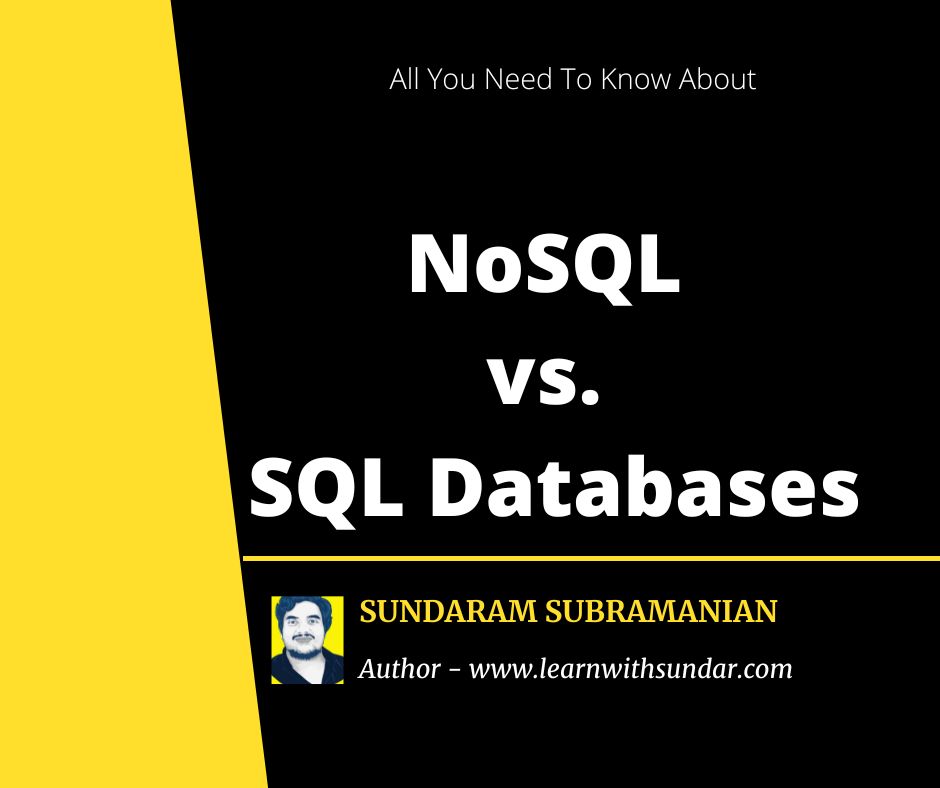Introduction
In today’s data-driven world, the choice of database technology plays a crucial role in shaping the efficiency and scalability of applications. Two major database types have emerged as popular choices: NoSQL and SQL databases. Each type has its strengths and weaknesses, making it essential for developers and data architects to understand when to use NoSQL and when to use SQL databases. In this blog post, we will explore the differences between these database types and provide real-time examples to illustrate their appropriate use cases.
SQL Databases
SQL (Structured Query Language) databases are relational databases that organize and store data in well-defined tables, using rows and columns. They follow the ACID (Atomicity, Consistency, Isolation, Durability) properties, ensuring data integrity and consistency.
When to Use SQL Databases
Structured and well-defined data: SQL databases are ideal for applications that require structured and highly organized data. Examples include financial systems, HR databases, and content management systems (CMS).
Real-Time Example: A banking application that needs to store and manage customer data, account information, and transaction records.
Complex queries and joins: SQL databases excel at handling complex queries and multiple table joins. SQL databases are an appropriate choice if your application requires advanced analytics and data aggregation.
Real-Time Example: An e-commerce platform that needs to analyze customer purchase patterns, calculate sales revenue, and generate detailed sales reports.
Data integrity and consistency: For applications where data accuracy and consistency are paramount, SQL databases with their support for ACID transactions offer a robust solution.
Real-Time Example: A reservation system for airline bookings that must ensure seat availability and handle simultaneous booking requests without conflicts.
NoSQL Databases
NoSQL (Not Only SQL) databases are non-relational databases that offer a more flexible approach to storing and retrieving data. They don’t follow the traditional tabular structure and, in some cases, forgo ACID properties in favor of BASE (Basically Available, Soft state, Eventually consistent) principles, providing high scalability and availability.
When to Use NoSQL Databases
Unstructured or semi-structured data: NoSQL databases are well-suited for handling unstructured or semi-structured data, such as JSON or XML documents.
Real-Time Example: A social media platform that stores user-generated content, including posts, images, and comments.
High scalability and performance: NoSQL databases shine when dealing with a massive amount of data and requiring horizontal scaling.
Real-Time Example: An IoT (Internet of Things) platform collecting sensor data from thousands of devices distributed worldwide.
Agile and fast development: NoSQL databases allow for quick schema changes and adaptations to evolving data needs, making them ideal for agile development environments.
Real-Time Example: A startup building a new web application where the data model will likely change during development.
Real-time applications and caching: For applications that demand low-latency data access, NoSQL databases, especially in-memory databases, can provide significant performance improvements.
Real-Time Example: A gaming platform requiring real-time leaderboards and rankings.
Conclusion
In summary, the choice between NoSQL and SQL databases depends on the specific requirements of your application and its data characteristics. SQL databases excel in handling structured data, and complex queries, and ensuring data integrity, making them a reliable choice for transactional applications. On the other hand, NoSQL databases shine when dealing with unstructured or semi-structured data, high scalability, and agile development needs.
Remember that it’s not a strict either/or choice and hybrid solutions can be employed in some scenarios, leveraging the strengths of both database types. Ultimately, understanding the nature of your data, the scale of your application, and its performance requirements will help guide your decision in selecting the appropriate database technology.

Leave a comment